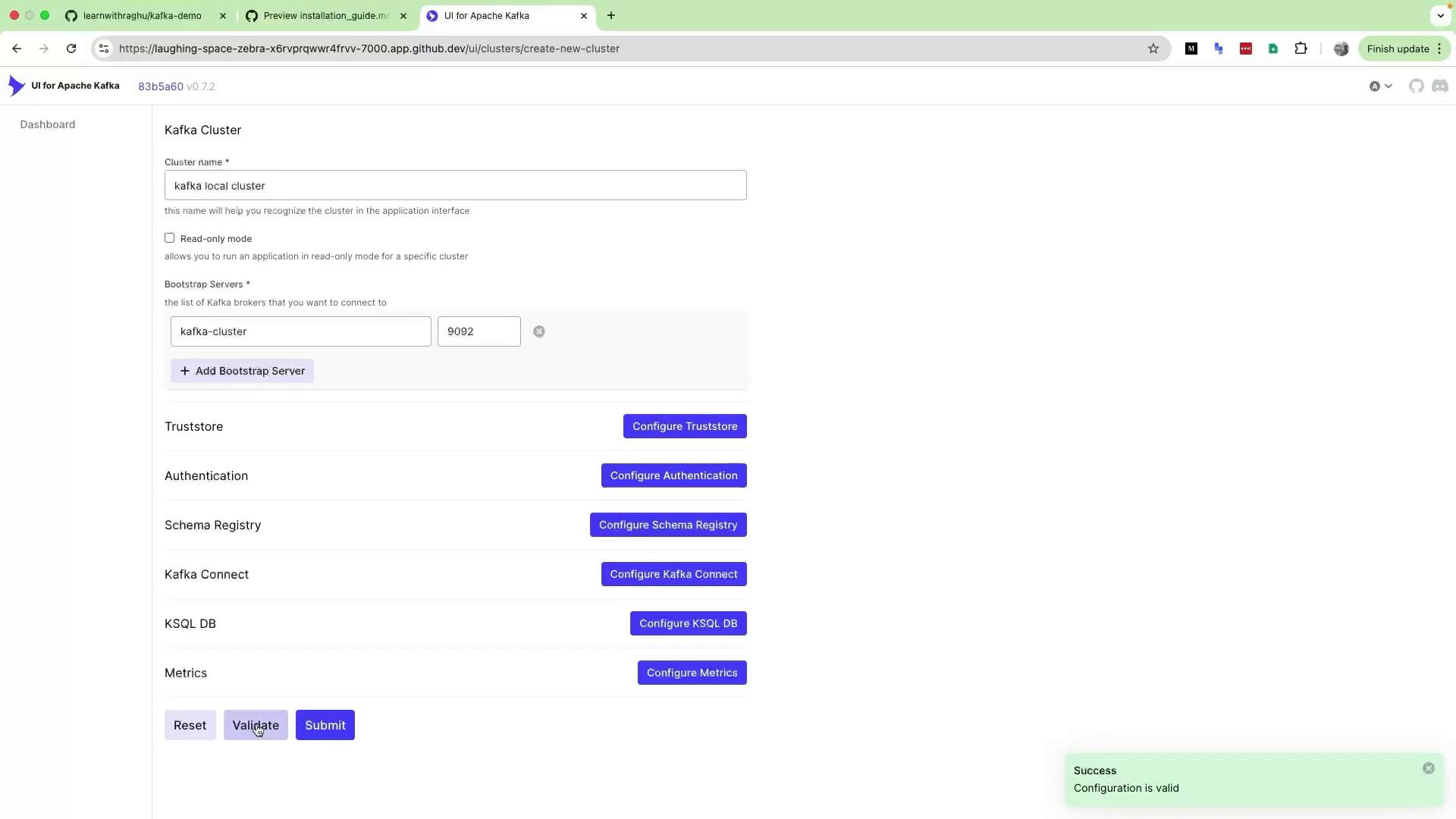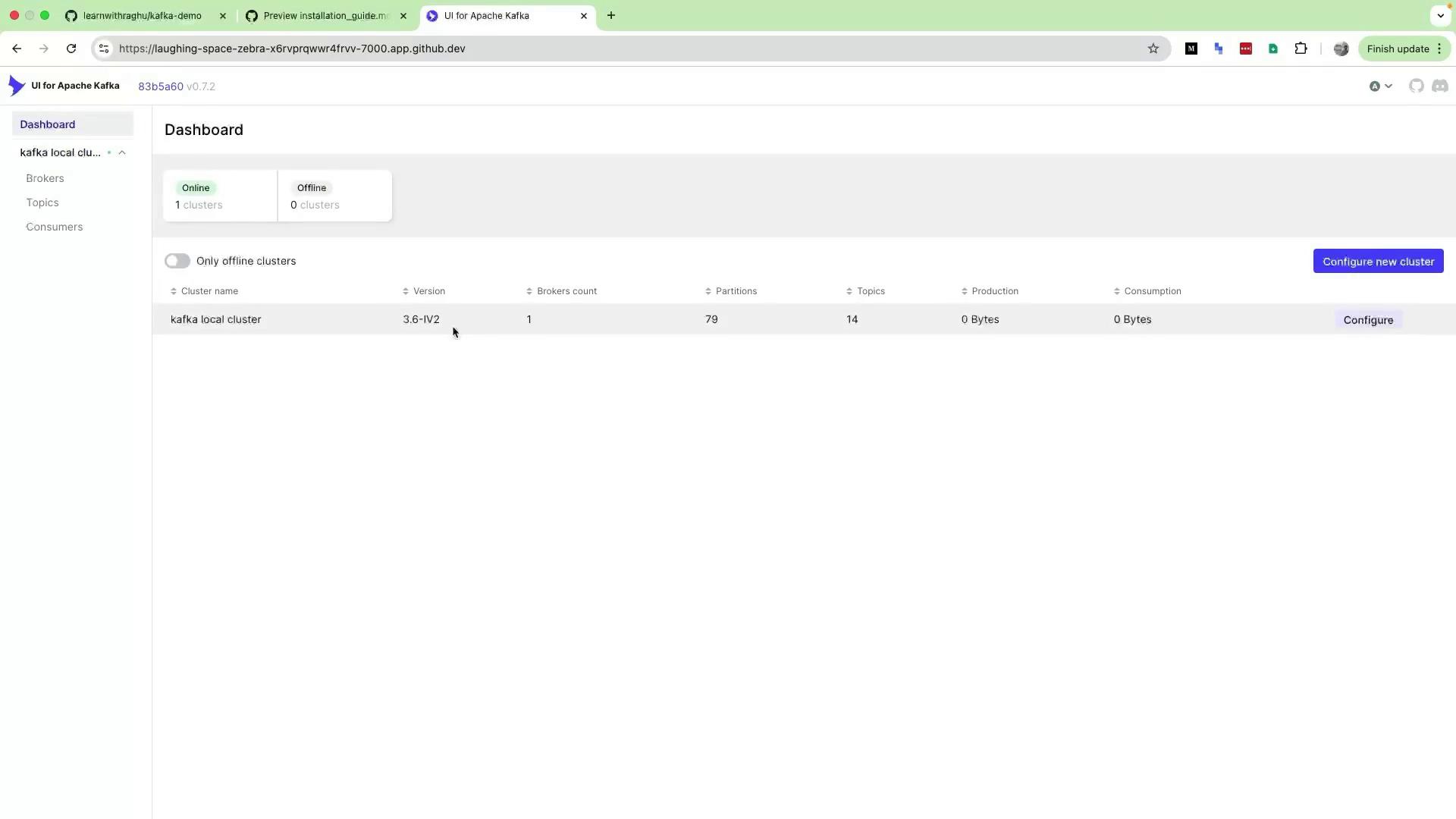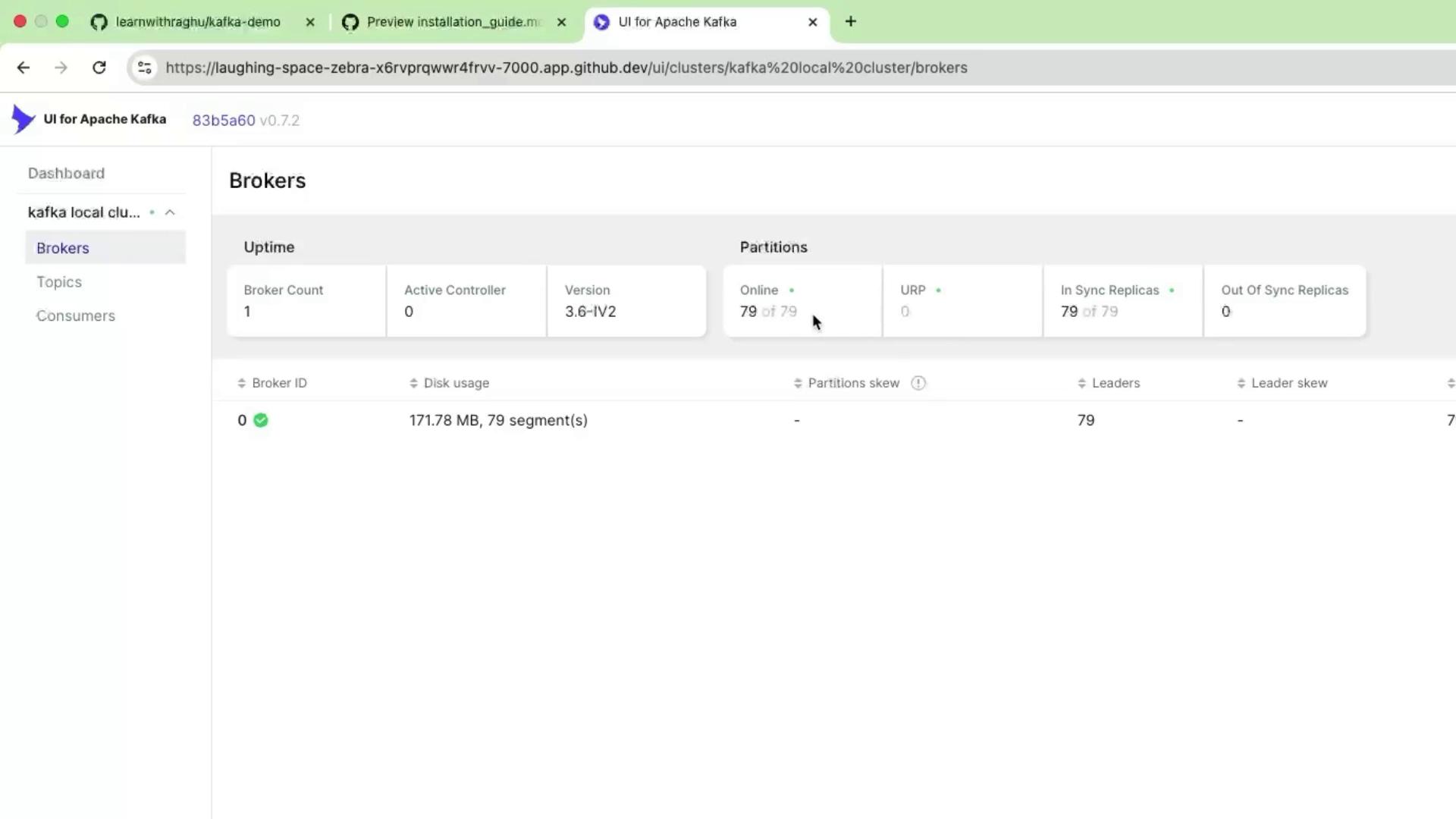Event Streaming with Kafka
Foundations of Event Streaming
Demo Setting up Kafka Cluster and Kafka UI using Docker
In this tutorial, you'll learn how to spin up a fully functional Apache Kafka cluster with Docker and visualize it using an open-source Kafka UI. By the end, you’ll be able to manage topics, brokers, and partitions—all from a browser.
Prerequisites
- Docker installed on your machine
- A code editor or terminal of your choice
1. Create a Dedicated Docker Network
Isolate your Kafka components on a custom bridge network:
docker network create kafka-net
2. Launch the Kafka Cluster
We’ll use the lensesio/fast-data-dev Docker image, which bundles ZooKeeper, Kafka broker, Schema Registry, REST Proxy, and Control Center.
docker run --rm -d \
--network kafka-net \
-p 2181:2181 \
-p 3030:3030 \
-p 9092:9092 \
-p 8081:8081 \
-p 8082:8082 \
-e ADV_HOST=kafka-cluster \
--name kafka-cluster \
lensesio/fast-data-dev
| Port | Service |
|---|---|
| 2181 | ZooKeeper |
| 3030 | Schema Registry UI |
| 9092 | Kafka broker |
| 8081 | REST Proxy |
| 8082 | Control Center |
When you run this command for the first time, Docker will pull the image:
Unable to find image 'lensesio/fast-data-dev:latest' locally
latest: Pulling from lensesio/fast-data-dev
31.43MB/31.43MB
...
79b6f845fed: Download complete
Once started, verify the container is running:
docker container ls
3. Deploy the Kafka UI
We’ll add Kafka UI by Provectus Labs to visualize and manage your cluster through a web interface.
docker run --rm -d \
--network kafka-net \
-p 7000:8080 \
-e DYNAMIC_CONFIG_ENABLED=true \
--name kafka-ui \
provectuslabs/kafka-ui
Note
The DYNAMIC_CONFIG_ENABLED flag allows you to add and modify multiple Kafka clusters dynamically without restarting the UI.
Confirm both containers are up:
docker container ls
4. Configure Your Cluster in the UI
- Open your browser at:
http://localhost:7000 - On the initial setup page:
- Cluster Name: e.g.,
Kafka Local Cluster - Broker:
kafka-cluster:9092
- Cluster Name: e.g.,
- Click Validate to test connectivity.
- Once validated, click Submit.

After submission, refresh the page. You should see your cluster listed:

5. Explore Cluster Details
Brokers
Select Brokers from the sidebar to view:
- Broker count and IDs
- Controller status
- Kafka version
- Partition and replica status

Topics
Click Topics to browse all existing topics, including demo and system topics created by fast-data-dev.
Conclusion
With just two Docker commands, you now have a local Kafka cluster and a powerful UI to manage it. This setup eliminates heavy CLI usage and accelerates your development workflow.
Links and References
Watch Video
Watch video content